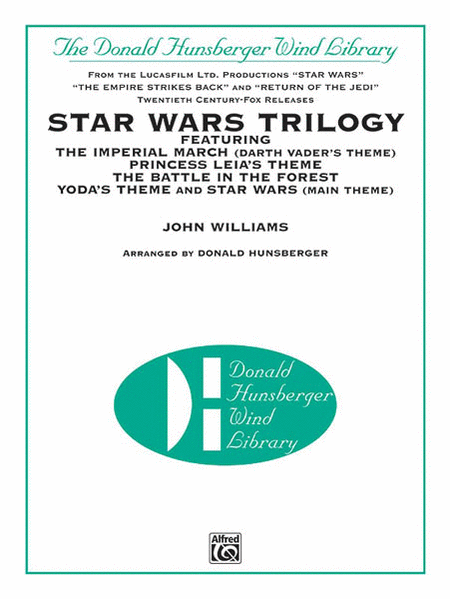To purchase a ticket via TryBooking, click here
To download a poster click here.
To see the notice on Eventfinda click here
Concert is Saturday 7.00pm 4 June 2022 at St Silas Anglican Church North Balwyn.
The program is made up of the following works
Planet B by Cathy Likhuta (6 minutes) – guest conductor Rowan Taylor
Kyiv, 2022 by Brian Balmages (5 minutes)
The Planets by Gustav Holst, transcribed for wind band by Christiaan Janssen (55 minutes)
Star Wars: Main Theme by John Williams, arr. Donald Hunsberger (3 minutes)
PROGRAM NOTES
PLANET B
The composer Cathy Likhuta is Ukrainian born now working in Brisbane after completing her Doctor of Philosophy degree at the University of Queensland. Go to her website for more details about her studies, the works she has composed and the organisation who have commissioned her to compose for them. To go to her website click here.
Planet B was composed for wind ensemble and the world premiere performance in July 2021 was commissioned by an international consortium led by Rachel Howley—Grace Lutheran College. It was by Queensland Conservatorium Wind Orchestra and selected students from Grace Lutheran College conducted by Rachel Howley.
The video recording from the world premiere of Planet B (2021, grade 4), featuring artwork by students of Holy Family Primary School Indooroopilly (Brisbane, Australia) with the artwork project led by Rachel Austin can be watched here click here.
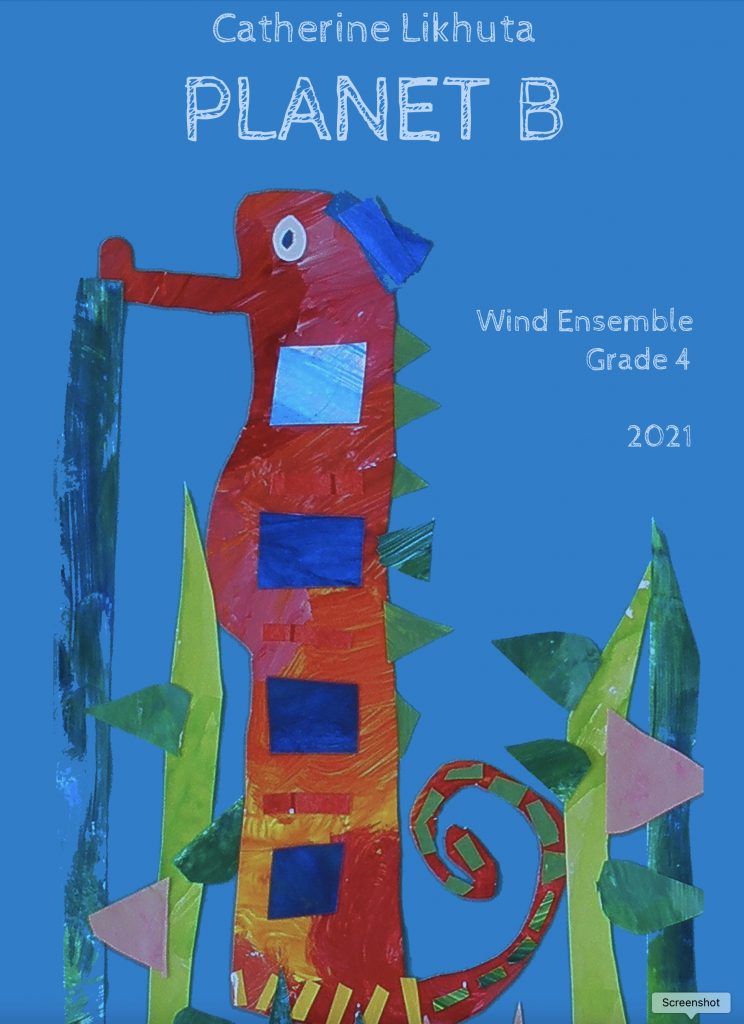
PLANET B program notes
Children are one third of our population and all of our future
—Select Panel for the Promotion of Child Health 1981
It is no secret to anyone that our planet is suffering, least of all to the children of today. I heard the following sentiment: “Take care of your planet. There is no planet B.” And I thought: what if there were an ideal planet without violence, racism, greed, ecological emergencies and global pandemics? A musical journey towards such a planet could give us all some optimism for the future. I believe that in 2021 we need it more than ever.
The piece opens with static stacked perfect fifths, representing the vastness and the mysterious power of Space. Then, we zoom in on Earth, singling it out from the entire galaxy. The Earth is crying. It is hurt. It is letting out deep sighs, as if a wounded majestic animal.
The next section of the piece, characterised by rising tension, is the musical version of “enough is enough!”. It represents the protests, the high-school kids carrying huge posters, the outcries of the young generation. They are brave, bold, and they demand change and action. They came to protest and brought their message across loud and clear. Think about Greta Thunberg screaming: “…we will NEVER forgive you!!!” with tears running down her cheeks. The Earth is shouting with them, and the Earth is grieving with them.
The final section opens with the musical imitation of the sky clearing after a storm, sun coming out, and nature starting to awaken. This section is about positivity, hope and healing. In the final chords, we are zooming out and going back into Space, seeing the Earth get smaller and smaller. The Earth is smiling. It looks greener. It feels healed.
KYIV, 2022
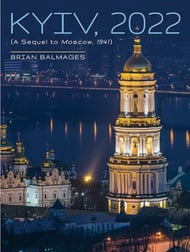
The composer Brian Balmages writes:
“With the tragic events unfolding in Ukraine, I have heard from numerous directors asking about my thoughts on performing “Moscow, 1941.” My answer is simple – this new work is the exact same grade level as “Moscow,” and changes the narrative – what happens when the theme from “Moscow” becomes the aggressor, and the people of Ukraine (represented by both their National Anthem and the song “Prayer for Ukraine”) become the heroes? Further, I will be donating 100% of the proceeds to relief organizations on the ground in Ukraine.”
To watch a video of the performance of this work click here.
THE PLANETS
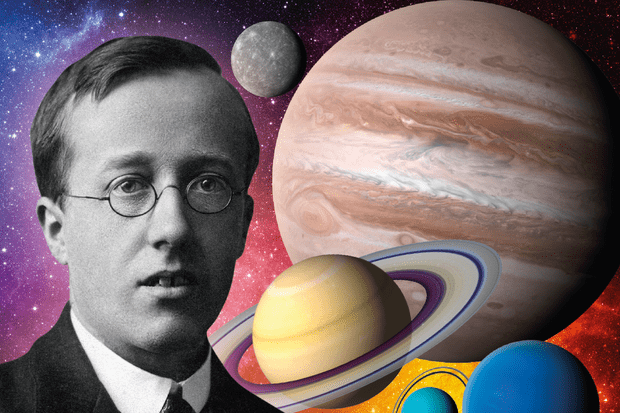
THE PLANETS program notes
English composer Gustav Holst composed The Planets, Op.32 between 1914 and 1916. It’s a seven-movement orchestral suite in which each movement is named after a planet pf the Solar System and its corresponding astrological character. Because the concept of the work is astrological rather than astronomical, planet Earth is not included in the Suite.
The idea of the work was suggested by Clifford Bax, who introduced him to astrology when the two were part of a small group of English artists holidaying in Majorca in the spring of 1913.
The Planets was initially scored for piano duet, except for Neptune, which was scored for a single organ. Later Holst scored the suite for a large orchestra, in which form it became enormously popular. The orchestration was very imaginative and colourful, showing the influence of such contemporary composers as Igor Stravinsky and Arnold Schoenberg, as well as such late Russian romantics as Nikolai Rimsky-Korsakov and Alexander Glazunov.
The suite has seven movements, each named after a planet and its corresponding astrological character.
- Mars, the Bringer of War
- Venus, the Bringer of Peace
- Mercury, the Winged Messenger
- Jupiter, the Bringer of Jollity
- Saturn, the Bringer of Old Age
- Uranus, the Magician
- Neptune, the Mystic.
A performance video of the same edition for wind band being performed click here
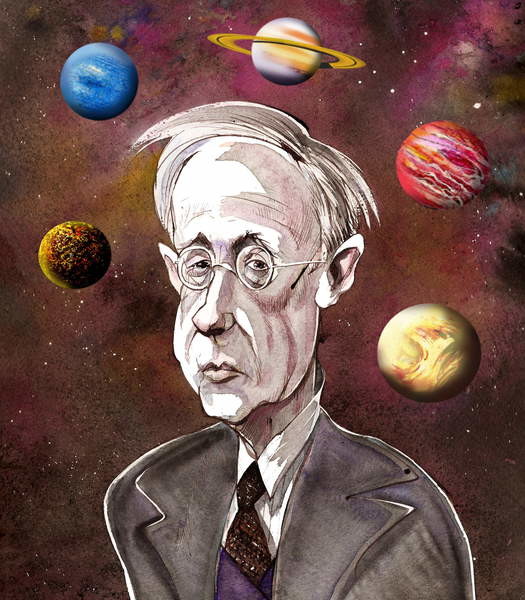
Uranus is a very weird planet. Here’s why astronomers want to send a probe to it
A recent program was aired on the ABC about Uranus – one of our ice-planets. To view the program, click here. Its name Uranus is … regal. It was named after the Greek god of the sky, Ouranos, father of Saturn and grandfather of Jupiter. Unlike other planets, whose moons are named after characters from Greek mythology, Uranus’s 27 moons are named after the works of William Shakespeare and Alexander Pope.
STAR WARS – main theme
The Star Wars project brought to international prominence the talents of John Williams, one of the most gifted composers for film and television. Williams worked in a totally different compositional style for the late 1970s in that he did not write short “cue music” for individual scenes,, but rather composed large free-standing compositions that accompanied large segments of the film.
This is the last movement in this version for wind band of Star Wars Trilogy arranged by Donald Hunsberger.
For a recording of the complete work click here.
